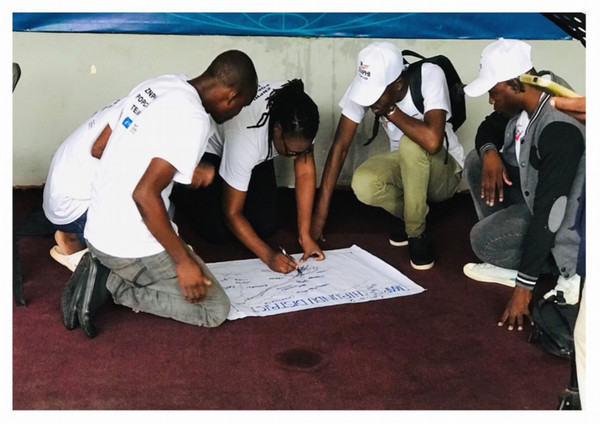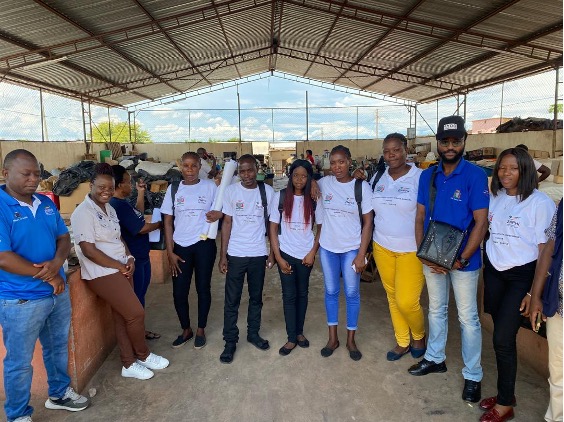Securing Zambia’s Borders: A Story of Collaboration and Resilience
In the heart of Southern Africa, Zambia stands as a central transit hub, connecting eight neighbouring countries through a web of bustling borders. The onset of the COVID-19 pandemic exposed a critical vulnerability within these borders, revealing the urgent need for stronger defences against public health threats. Rising to the challenge, the Zambia National Public Health Institute (ZNPHI), in collaboration with the International Association of National Public Health Institutes (IANPHI) and the U.S. Centers for Disease Control and Prevention (CDC), embarked on a mission to fortify Zambia’s border health security.
As the technical arm of Zambia’s Ministry of Health, ZNPHI knew that the stakes were high. The porosity of Zambia’s borders, with significant undocumented and unofficial cross-border travel, posed a constant risk to the nation’s public health. "The pandemic was a wake-up call," recalled Professor Roma Chilengi, director general of the ZNPHI. "It underscored the necessity of having robust systems in place to detect, prevent, and respond to public health threats at our borders."
In the early days of the collaboration, ZNPHI, IANPHI, and U.S. CDC came together to design a comprehensive strategy that would mitigate the impact of COVID-19 and establish long-term public health security. The partnership focused on strengthening ZNPHI's border health capacities by developing IHR-compliant Standard Operating Procedures (SOPs) and multisectoral Public Health Emergency Response Plans (PHERP) tailored to Zambia's specific context.
"We wanted to ensure that every point of entry, whether it be an airport, a border crossing, or a harbour, was equipped to handle potential health threats," explained Dr. Kiswensida Sawadogo, health scientist at the U.S. CDC. "This was about more than just responding to COVID-19. It was about building a resilient system that could tackle any future public health challenge."
The collaboration’s first milestone was the creation of a comprehensive public health emergency response plan. This plan, developed with input from various sectors, including transport, agriculture, and animal health ministries, adopted a One Health approach. This holistic strategy ensured that preparedness, surveillance, and response capacities were strengthened across the board. Teams were identified, equipped, and logistics were prepositioned, ready to be activated at a moment's notice.

Picture 1: Mapping of routes used by travelers
"Having this plan in place gives us a sense of readiness that we didn’t have before," noted Kennedy Salipako, a surveillance officer stationed at the Kazungula border. "Now, when a health threat looms, we know exactly what steps to take. It’s a huge leap forward for our national security."
Training was another critical component of the project. Health and surveillance staff at key points of entry, including Kenneth Kaunda International Airport and Mpulungu Harbour, underwent intensive training on the new response plans and SOPs. "The training was conducted right at the points of entry, ensuring that the people who will be on the frontlines during a public health event were well-prepared," said Richard Chirwa, a port health officer at Kenneth Kaunda International Airport. "We practiced scenarios, and now we’re confident in our ability to manage real situations."
A significant achievement of the project was the integration of travel history into patient interactions within the health system. Recognizing the role of travel in disease transmission, ZNPHI worked to amend data collection tools, ensuring that travel history is now a key consideration in clinical and public health interventions. "It’s a small change that makes a big difference," Professor Chilengi remarked. "By understanding a patient’s travel history, we can better diagnose, treat, and contain potential outbreaks."
The project also embraced a novel approach known as Population Connectivity Across Borders (PopCAB). The PopCAB toolkit, developed by the U.S. CDC, helps characterize sociocultural connectivity and population movement patterns to enhance public health preparedness and response along porous borders and among mobile populations. Through qualitative and geospatial data collection, ZNPHI successfully characterized movement patterns into, through, and out of Chirundu district. This process enabled the identification of key drivers of movement and the main points of interest within the district.

Picture 2: National team and data collectors after interviewing marketeers at a Market in Chirundu
"The PopCAB approach opened our eyes to the realities on the ground," said Alick Mumba, a community volunteer. "We now have a better understanding of how diseases can cross borders and how we can prevent them. The community feels more involved, and that’s a game changer."
The fruits of this collaboration were put to the test during a recent cholera outbreak in Chipata. Community members, trained under the PopCAB approach, were instrumental in the early detection of cases, enabling a swift and effective response. "It was a proud moment for us," reflected Dr. Chilufya Mulenga, the ZNPHI border health focal person. "The training paid off, and it showed that when communities are engaged, we can stop diseases in their tracks."

Picture 3: Engagement of health care workers
As Zambia looks to the future, ZNPHI is planning how to expand border health activities and training to more districts. "We’ve built a strong foundation, but this is just the beginning," said Dr Sawadogo. "The goal is to ensure that every border community in Zambia is equipped to protect itself and contribute to the nation’s public health security."
The story of Zambia’s border health activities is one of resilience, collaboration, and unwavering commitment to protecting public health. It is a testament to what can be achieved when nations, organizations, and communities come together with a shared purpose. As Zambia strengthens its defences, it stands as a beacon of preparedness in a world where public health threats know no borders.